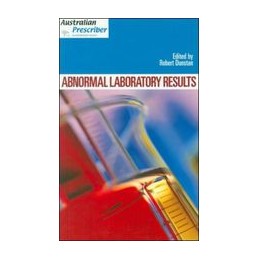- Reduced price

Order to parcel locker

easy pay


 Delivery policy
Delivery policy
Choose Paczkomat Inpost, Orlen Paczka, DHL, DPD or Poczta Polska. Click for more details
 Security policy
Security policy
Pay with a quick bank transfer, payment card or cash on delivery. Click for more details
 Return policy
Return policy
If you are a consumer, you can return the goods within 14 days. Click for more details
Abnormal Laboratory Results is a compilation of articles from Australian Prescriber journal on the interpretation of abnormal laboratory results. Includes HIV and blood clotting tests, new units of measure and new technologies. Enables Pathologists, general practitioners and related healthcare professionals to remain abreast of the latest developments in the interpretation of abnormal laboratory results
Data sheet
